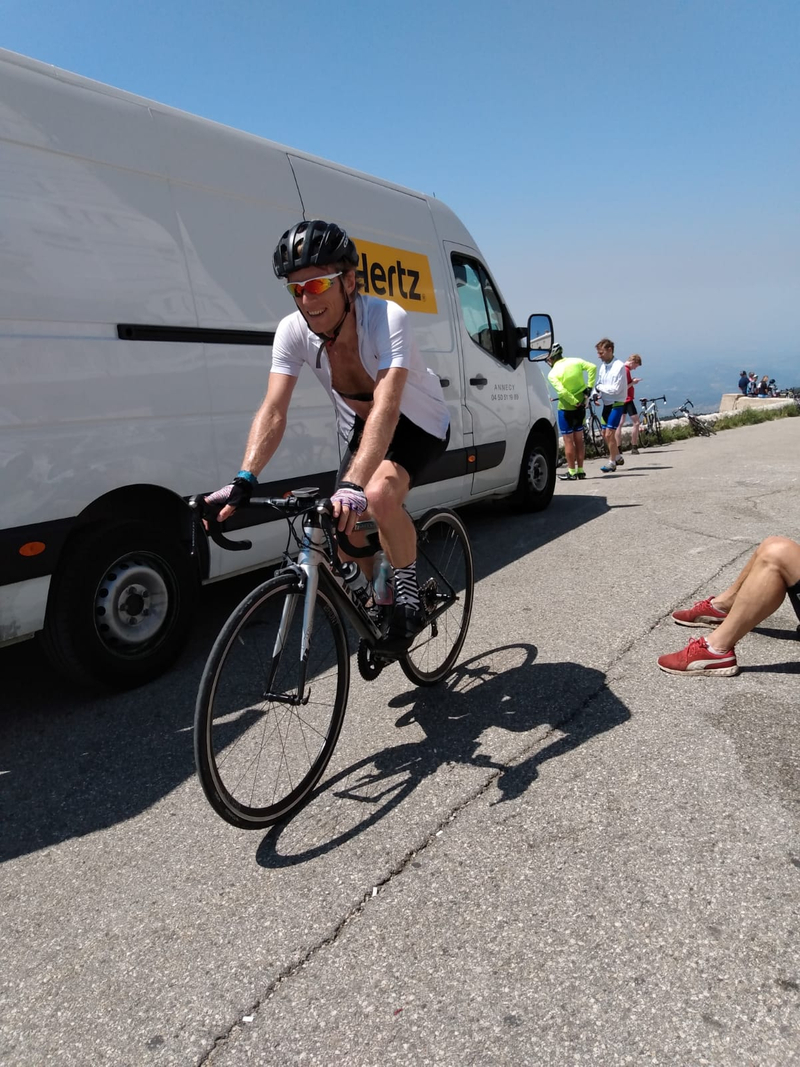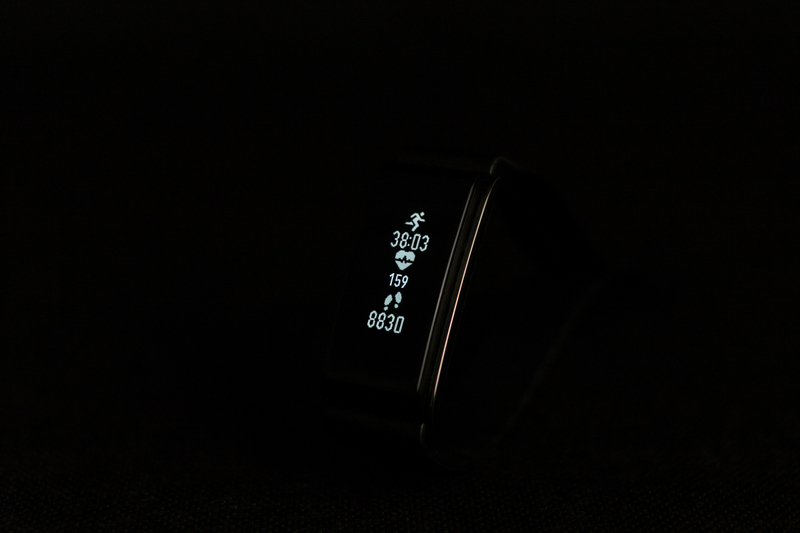Cycling and Running Performance
23-10-2019
Can cycling support your running? Will it make you faster, slower, stronger, weaker?
I love cycling.
I love running.
I’m always aiming to get the perfect balance between the two. It’s a tough ask.
Each discipline has its own specific training needs, and just building general aerobic fitness doesn’t mean you’ll be great at both.
I can tell you that cycling definitely supports running performance. I can also tell you that running will do VERY LITTLE for your cycling performance! 😄
Performance Improvements From Cycling
I consider cycling one of the keys to my improvement as a runner. It has wide varying impacts:
Aerobic Endurance
Running is a mostly aerobic activity if you’re not sprinting on a track. In order to support aerobic development you need to put in long runs and time on your feet. 3-hour runs are hard and can leave you fatigued and injury prone.
But a 3-hour ride on the bike with a heart rate in Zone 2 is a direct metabolic equivalent of a 3-hour run. And it’s easy! You could do it every day and recover without problems.
All the time on the bike which is ‘focused’ training is improving your heart strength and your ability to transport and utilise oxygen in your muscles. If you do an endurance ride, or high intensity session, you are really improving your metabolic efficiency for running at those intensities too.
Muscle Groups
Cycling and running use different muscle groups. Muscle fibre recruitment whilst cycling won’t necessarily improve those muscles you use most when running.
When cycling we use our glutes and quads in the upper leg, and the soleus and gastrocnemius in the calf. These aid in the very particular movements of the upstroke and downstroke of pedal rotation.
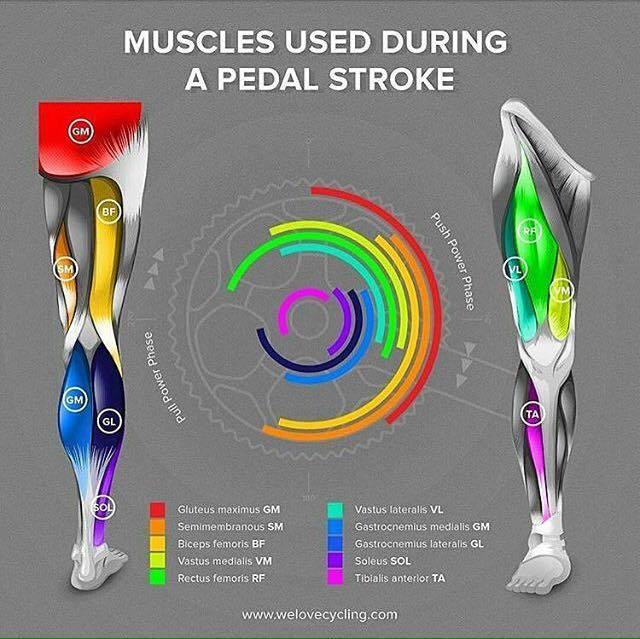
The main muscles used during running are the quads, hip flexors, adductors, hamstrings and calf muscles. These muscles ensure that your pelvis is stable while extending your hip and flexing your knee. This protects your spine. Balance and stability are key.
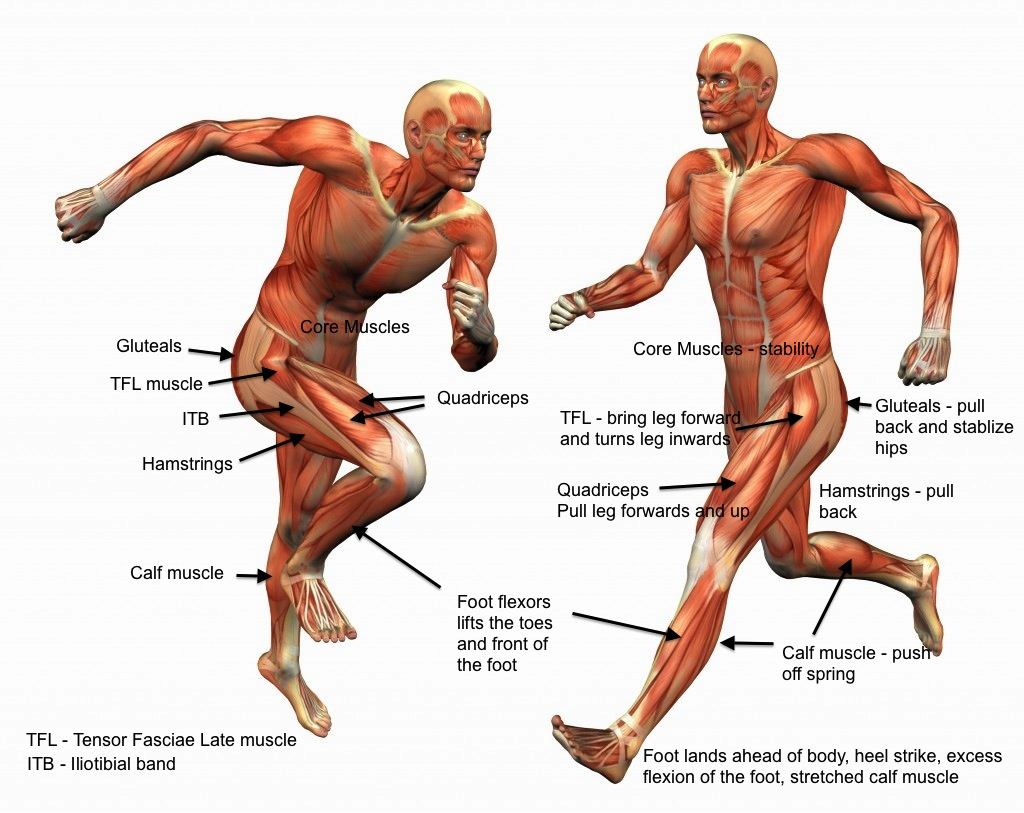
So there is some overlap. Specifically your quads and glutes are extensively used for both. This means that the strength and the type of muscle fibres you recruit from cycling will help your running, and vice versa.
The core is also improved by both disciplines. Cycling, especially in the hills, gives you a solid core by which you can offset the force of your legs on the pedals. This is directly transferable to running.
There are muscles that don’t overlap at all though. Cycling will shorten your hamstrings. There isn’t enough leg extension to improve hamstring strength on the bike. They atrophy and tighten, which can lead to technique issues whilst running and the possibility of strains.
Developing muscles that don’t overlap can be a good thing. I think all round strength is a compliment to either discipline and having strong glutes for me means I can keep stable towards the end of long races. Improving functional strength all round is an effective method of injury prevention and can lead to gains in other areas. For example my descending is so much better now I have the strength in quads from cycling.
Technique
Cyclists like talking about cadence. This is how many times per minute you turn the pedals. The faster you turn the pedals, the more you take the load off your legs and put it onto your aerobic system. As cycling and running are primarily aerobic activities rather than strength based, this makes sense. A cadence of 90 rpm is best for distance training, slightly lower for power whilst climbing.
The best distance runners of all time have a cadence of around 180 steps per minute. Leg turnover is rapid. It’s about as rapid as 90 rpm on a bike 😄 . The more you can develop this ability on the bike, the easier it is to develop leg speed whilst running. I now run regularly at 180 - 200 steps per minute, and consider that key to injury prevention. A lot of beginner runners struggle to hit this leg speed.
Coupled with cadence is stride length whilst running. The strength that comes from the bike in the form of core and glute adaptation means you can hold a longer stride length comfortably whilst running and not fatigue as much.
If you have quicker cadence, or longer stride length, you will go faster. Cycling will help both.
Injury And Training Volume
Running is a high impact sport which means runners are prone to injuries.
It puts a strain on our bones, muscles, ligaments, tendons, and joints.
Fortunately, our bodies are fantastic at adapting these and they will grow stronger as they are put under more strain.
In the meantime, we have to take it easy and build our running volume according to what our bodies can handle.
This limits the improvement of our aerobic system as we are unable to train as much as we could do if our bodies were strong enough. As running improvement comes primarily from building our aerobic capacity, this is a big problem.
Cycling is a non-impact sport. You can do a lot more cycling than running in terms of duration and intensity, improving your aerobic system without hurting your body and getting injured. It can fill the gap that exists due to muscle fatigue or injury threat whilst running. Cycling can enhance your aerobic system beyond where you could be by just running.
Recovery
Cycling is easier to recover from and won’t fatigue you as much as running does. It’s a masochistic sport, you can go and suffer all day on the bike, get up the next day and do it all again. You don’t get the same muscular damage and DOMS is really hard to get from bike workouts (You have to go all out, like climbing Mont Ventoux 3 times in 7 hours 😄).
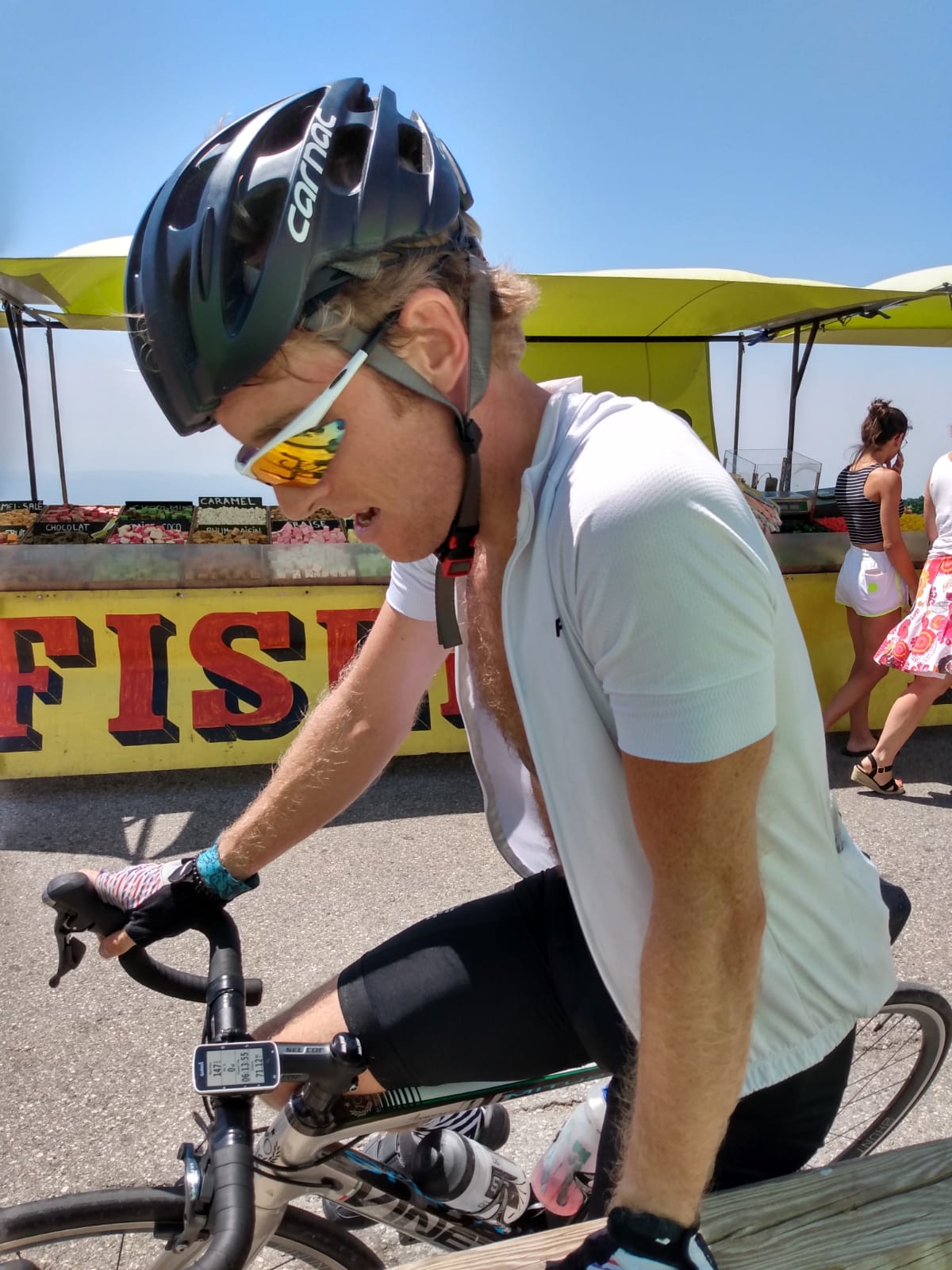
The second is that you can actually use your cycling time to recover from your running workouts. If you have a hard session in the morning, try a 30 minute - 1 hour bike ride in the afternoon to help pump blood to your fatigued muscles. After a race, the next day I always go out on my bike for an hour, even if I have severe DOMS. The body recovers quicker whilst reducing the possibility of injury.
Training Knowledge And Practices
Amateur cyclists know how to train their bodies well. They use data, testing, and periodisation.
They rely on powerful data from power meters, cadence sensors, and heart rate monitors.
Amateur runners don’t use power meters. They rarely use heart rate monitors.
This lack of feedback is one reason why many amateur runners struggle to improve.
Without any way to view your fitness analytically, how can you hope to improve, and recognise when you are doing so? I’ve found using a heart rate monitor whilst training has improved my ability to know which training zone I am developing. Making my training more structured has led to big improvements.
Cyclists have a standardised test to find the power they can sustain for 1 hour (FTP test). This can be used to benchmark their performance improvements and set goals to reach them.
Whilst it’s beneficial to do a standardised running fitness test, say a 5k, every 6 - 8 weeks, I’ve not spoken to one runner that does so. For track and road runners, it's easier to benchmark performance from races. For trail and fell runners the terrain, weather, ground quality can make benchmarking performance from races wildly inaccurate.
I now test my fitness gains with metrics from a heart rate monitor.
I know the maximum heart rate I can maintain for different durations and can see improvements in them. For example, if I could hold 173bpm for an hour last month, and this month I can hold 175bpm for an hour, that’s a gain in fitness.
I also test my pace at certain heart rates on the flat. For example, my Zone 2 pace has increased dramatically from 9:00 minute miles to 7:00 minute miles. I consistently see this drop, although it has plateaued a lot.
Cyclists periodise their training and have metrics to know when they are peaking. It is quite common to do high volume base training in the winter, slowly building in intensity and then doing race specific efforts close to the race season.
Most amateur runners can struggle to see the bigger picture of their training, and see how what they are doing now will help with their A race in one years' time. Spending 4 months running easier at high volume can be very hard to comprehend, but doing so will improve your ability to race hard the next year.
Training Time
It’s hard to fit in the training.
Having a family, a time-intensive career, or just other interests and hobbies, can take away the time you have available to put into running.
The bike can make this much easier. You can incorporate your bike training into your normal travelling / commuting time in the week. Chances are that if you live in a city, it's faster to get to your duration by bike than on public transport. I consider anything around 10 miles to be easily replaceable by bike and the time taken being not too dissimilar. E.g. a car doing 30mph will take 20 minutes to do this (lucky to do that in most cities). On the bike it can be 30 - 40 mins.
Some Limitations
The biggest limitation to using cycling as part of your training time as a runner is specificity.
The specific muscle groups, coordination, metabolic, and aerobic requirements can only reach their peak if you practice what you want to peak in.
You will be a better runner if you can sustain high running mileage and train in a structured manner without the bike.
I think that most amateur runners are unable to reach the kind of mileage required to develop their aerobic system to its potential.
What type of runner are you? If you are a long distance mountain runner, the cycling will be very effective to improve your endurance, strength, and speed. If you are an 800m track runner, I cannot see that cycling will improve your performance at all. Most amateur runners fall somewhere between these two extremes.
I believe anything from 5k upwards can be helped with cycling. I also think that if you run in the hills, cross country, or trails, then cycling can be hugely beneficial from a strength perspective.
Lets Finally Say Those Magical Words, “Rob”, “Jebb"
Rob Jebb.
There I said it.
He’s a running and cycling legend. He’s won some major bike events, the 3 Peaks Cyclocross, Fred Whitton Challenge. He was the best in the UK at the Fell Running Championships for a million years in a row. He counts cycling as one of his major inputs to his running performances. I shook his hand at the fell relays last weekend. Utter legend!


